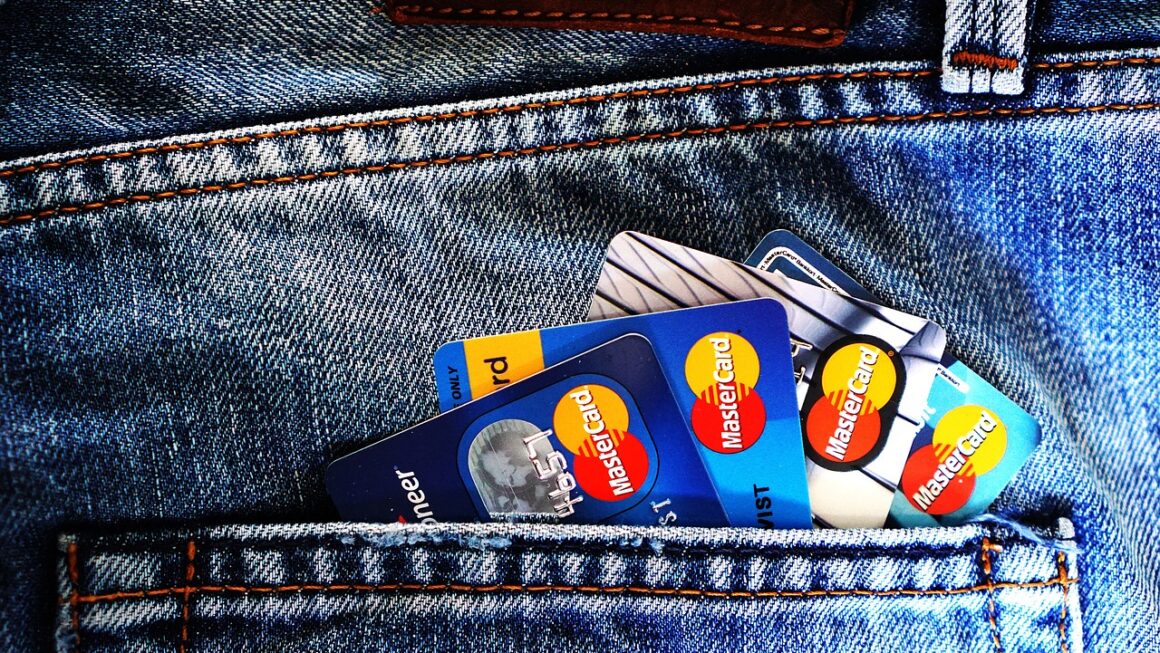Print on demand (POD) has revolutionized the e-commerce landscape, offering a flexible and low-risk entry point for entrepreneurs, artists, and anyone looking to sell custom merchandise. Forget about upfront inventory costs or managing complex fulfillment logistics. POD empowers you to focus on design and marketing while leaving the printing, shipping, and handling to a third-party provider. This guide dives deep into the world of print on demand, covering everything you need to know to get started and succeed.
What is Print on Demand?
Understanding the Basics of POD
Print on demand is a business model where you work with a third-party supplier to customize white-label products (like t-shirts, mugs, posters, and phone cases) with your own designs. These products are only printed when an order is placed, eliminating the need to hold any inventory yourself.
How Print on Demand Works: A Step-by-Step Guide
The process is simple:
- Design Creation: You create or upload your designs to the POD platform.
- Product Listing: You select the products you want to sell and apply your designs to them within the platform.
- Online Store Integration: You connect your POD platform to your online store (e.g., Shopify, Etsy, WooCommerce).
- Customer Order: A customer places an order on your online store.
- Order Fulfillment: The POD provider automatically receives the order, prints your design on the selected product, and ships it directly to the customer.
- Payment: You pay the POD provider for the product and fulfillment, and you keep the difference between the sale price and the provider’s cost.
Benefits of Using Print on Demand
- Low Start-Up Costs: No need to invest in expensive printing equipment or bulk inventory.
- Reduced Risk: You only pay when a product is sold, minimizing financial risk.
- Wide Product Selection: Access a diverse range of products, from apparel to home decor.
- Flexibility and Scalability: Easily add or remove products, and scale your business as demand grows.
- Focus on Creativity and Marketing: Dedicate your time to designing and promoting your products.
- Location Independence: Run your business from anywhere with an internet connection.
Choosing the Right Print on Demand Platform
Key Factors to Consider
Selecting the right POD platform is crucial for your success. Consider these factors:
- Product Catalog: Does the platform offer the products you want to sell?
- Printing Quality: What is the quality of the print and the durability of the products? Order samples to test this.
- Pricing: What are the costs for products and fulfillment? How do these compare to your desired profit margins?
- Shipping Options and Speed: What shipping methods are available, and how quickly are orders delivered?
- Integration with E-commerce Platforms: Does the platform integrate seamlessly with your existing online store?
- Customer Support: Is the customer support responsive and helpful?
- Minimum Order Quantities: Are there any minimum order requirements? (Most POD services don’t have these).
Popular Print on Demand Platforms
Here are some of the most popular POD platforms:
- Printful: Known for its high-quality printing, wide product selection, and warehousing services.
- Printify: Offers access to a large network of print providers, allowing you to compare prices and shipping options.
- Redbubble: A marketplace where artists can upload their designs and sell them on a variety of products. It handles all the production and shipping.
- Society6: Similar to Redbubble, focusing on art prints and home decor.
- Gelato: A global POD network with local production in many countries, offering faster shipping times.
- SPOD (Spreadshirt Print-on-Demand): Integrated with Spreadshirt and offers a range of apparel and accessories.
Example: If you are selling primarily in Europe, Gelato might be a good choice due to its distributed printing network across the continent, offering faster shipping and potentially lower shipping costs.
Comparing Costs and Features
Each platform has its own pricing structure, product offerings, and features. Do your research and compare platforms based on your specific needs. Many offer free trials or sample orders, allowing you to test their services before committing.
Actionable Takeaway: Create a spreadsheet to compare pricing, product options, shipping costs, and integration capabilities of at least three different POD platforms to make an informed decision.
Designing for Print on Demand
Creating High-Quality Designs
The quality of your designs is paramount to the success of your POD business. Invest time in creating eye-catching and original designs that appeal to your target audience.
- Resolution and File Formats: Use high-resolution images (at least 300 DPI) and appropriate file formats (e.g., PNG for transparent backgrounds, JPEG for photos).
- Color Management: Understand color modes (RGB for digital, CMYK for printing) and ensure your colors are accurately represented in the final print.
- Design Placement: Consider the placement of your designs on different products and adjust accordingly.
- Copyright and Trademark: Ensure your designs do not infringe on any copyrights or trademarks.
Design Tools and Resources
Here are some useful tools for creating your POD designs:
- Adobe Photoshop: Industry-standard for image editing and design.
- Adobe Illustrator: Vector-based design software ideal for creating scalable graphics and logos.
- Canva: A user-friendly online design tool with a wide range of templates and graphics.
- GIMP: A free and open-source image editor similar to Photoshop.
- Procreate: A powerful digital painting app for iPad.
Finding Design Inspiration
Look for inspiration in various sources, such as:
- Social Media: Follow relevant accounts and hashtags on platforms like Instagram, Pinterest, and TikTok.
- Design Blogs and Websites: Explore design blogs and websites for trends and ideas.
- Market Research: Analyze successful products and designs in your niche.
- Customer Feedback: Listen to your customers’ preferences and suggestions.
Example: If you are selling t-shirts with funny quotes, monitor trending topics on Twitter and Reddit to identify popular sayings that you can incorporate into your designs.
Marketing Your Print on Demand Business
Building Your Brand
Creating a strong brand is essential for standing out in the competitive POD market. Define your brand identity, including your logo, colors, fonts, and overall aesthetic.
Effective Marketing Strategies
Here are some effective marketing strategies to promote your POD products:
- Social Media Marketing: Use social media platforms like Instagram, Facebook, and Pinterest to showcase your products and engage with your target audience.
- Content Marketing: Create valuable content, such as blog posts, videos, and infographics, to attract and educate potential customers.
- Email Marketing: Build an email list and send targeted emails to promote new products, offer discounts, and nurture customer relationships.
- Search Engine Optimization (SEO): Optimize your website and product listings for search engines to improve visibility.
- Paid Advertising: Use paid advertising platforms like Google Ads and Facebook Ads to reach a wider audience.
- Influencer Marketing: Partner with influencers to promote your products to their followers.
Leveraging Social Media
Social media is a powerful tool for promoting your POD business. Use high-quality images and videos to showcase your products. Run contests and giveaways to increase engagement. Engage with your followers and respond to their comments and questions.
Example: Run an Instagram contest where followers can win a free t-shirt with their favorite design. Ask them to tag friends and share the post to enter. This can significantly increase your brand visibility and attract new customers.
Optimizing for Search Engines (SEO)
SEO is critical for driving organic traffic to your online store. Use relevant keywords in your product titles, descriptions, and meta tags. Build backlinks from other websites to improve your website’s authority.
Managing Your Print on Demand Business
Customer Service and Support
Providing excellent customer service is essential for building customer loyalty and generating repeat business. Respond promptly to customer inquiries, address their concerns, and resolve any issues that may arise.
Tracking Sales and Analytics
Monitor your sales data and analytics to understand what products are selling well, which marketing channels are most effective, and where you can improve your business.
- Sales Data: Track your sales volume, revenue, and profit margins.
- Website Analytics: Monitor your website traffic, bounce rate, and conversion rate.
- Customer Feedback: Collect and analyze customer feedback to identify areas for improvement.
Scaling Your Business
As your business grows, you may need to scale your operations to meet increasing demand. Consider these strategies:
- Outsourcing Tasks: Delegate tasks like customer service, social media management, and design creation to freelancers or virtual assistants.
- Expanding Your Product Line: Add new products to your catalog to attract a wider audience.
- Improving Your Marketing: Invest in more advanced marketing strategies, such as retargeting and automation.
- Negotiating Better Rates: As your order volume increases, negotiate better pricing with your POD provider.
Conclusion
Print on demand provides a fantastic opportunity to launch an e-commerce business with minimal risk and maximum flexibility. By understanding the fundamentals of POD, choosing the right platform, creating compelling designs, implementing effective marketing strategies, and providing excellent customer service, you can build a successful and profitable online business. Remember to continuously learn and adapt to the ever-evolving landscape of e-commerce to stay ahead of the competition and achieve long-term success.




